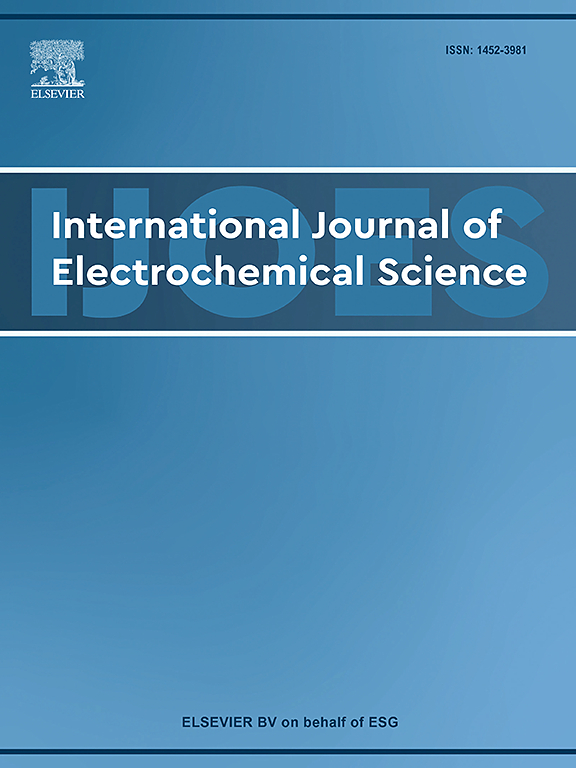Sweet Orange Peel Extract as green sustainable corrosion inhibitor for Al in 1 M HCl
IF 1.3
4区 化学
Q4 ELECTROCHEMISTRY
International Journal of Electrochemical Science
Pub Date : 2025-01-01
DOI:10.1016/j.ijoes.2024.100882
引用次数: 0
Abstract
In a one-molar hydrochloric acid solution, the potential of Sweet Orange Peel Extract (SOPE) as an inexpensive, efficient corrosion inhibitor for Al is explored. “Mass loss (ML), electrochemical frequency modulation (EFM)”, potentiodynamic polarization (PDP), “electrochemical impedance spectroscopy (EIS)”, energy dispersive X-ray spectroscopy (EDX), scanning electron microscopy (SEM), and atomic force microscopy (AFM) techniques were used to study this. The findings show that when extract concentrations were raised the inhibitory efficiency (IE) of SOPE increased. On the other hand, the IE of SOPE decreased when raised the temperature of the system. A maximum inhibition efficiency of approximately 92.53 % was achieved for Al in 300 ppm HCl solution. The adsorption of SOPE onto the Al surface followed Langmuir adsorption kinetics, suggesting a mixed physical adsorption mechanism. The negative value of the free energy of adsorption, less than −20 kJ mol⁻¹, indicated the physical nature of the adsorption process. This study presents a powerful and environmentally friendly method to reduce electrochemical corrosion by utilizing a new, efficient inhibitor. Surface morphology was disclosed by various techniques both with and without SOPE. The outcomes obtained using all techniques are in good agreement.
求助全文
约1分钟内获得全文
求助全文
来源期刊
CiteScore
3.00
自引率
20.00%
发文量
714
审稿时长
2.6 months
期刊介绍:
International Journal of Electrochemical Science is a peer-reviewed, open access journal that publishes original research articles, short communications as well as review articles in all areas of electrochemistry: Scope - Theoretical and Computational Electrochemistry - Processes on Electrodes - Electroanalytical Chemistry and Sensor Science - Corrosion - Electrochemical Energy Conversion and Storage - Electrochemical Engineering - Coatings - Electrochemical Synthesis - Bioelectrochemistry - Molecular Electrochemistry

 求助内容:
求助内容: 应助结果提醒方式:
应助结果提醒方式:


